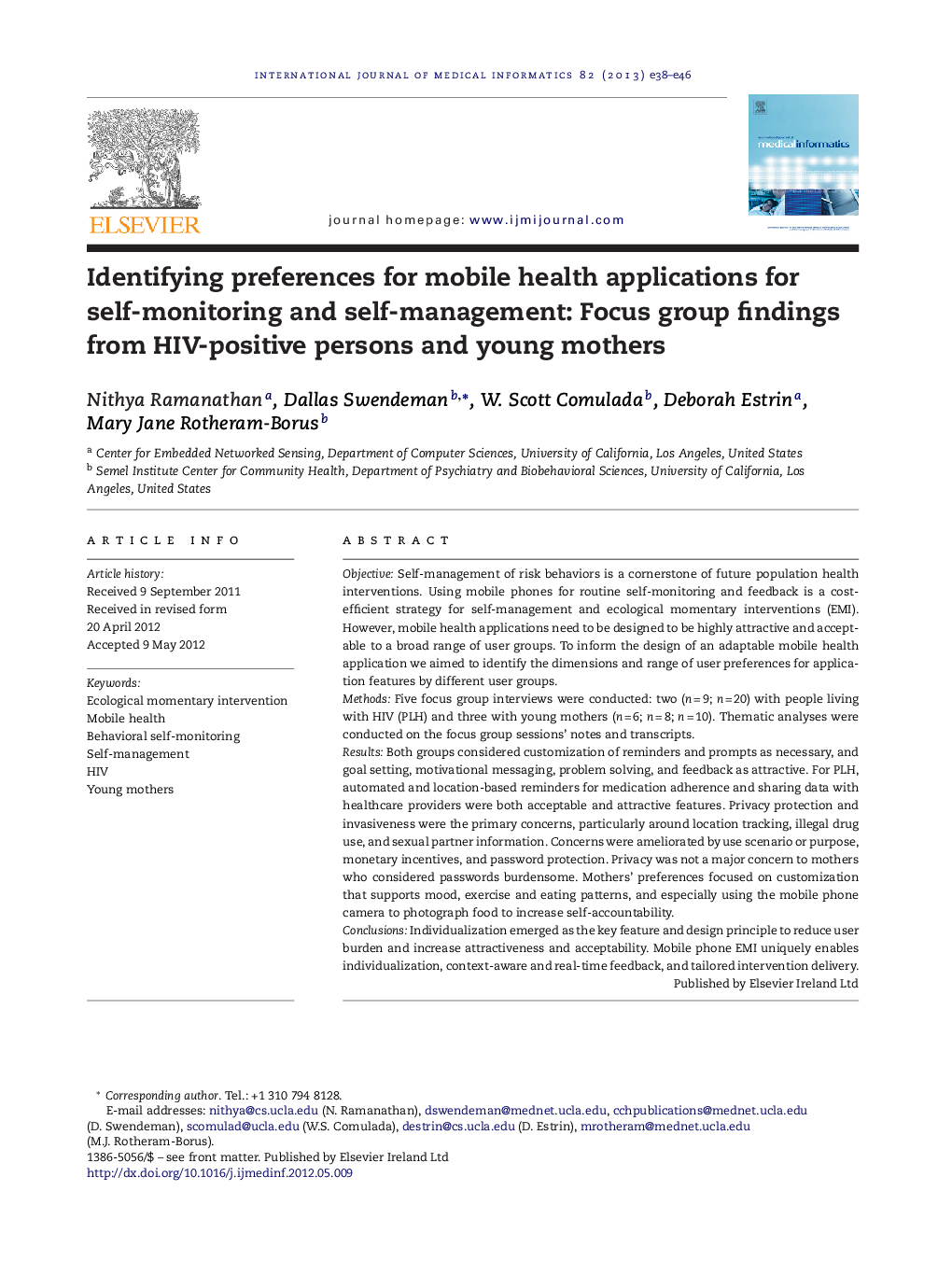| کد مقاله | کد نشریه | سال انتشار | مقاله انگلیسی | نسخه تمام متن |
|---|---|---|---|---|
| 516209 | 1449136 | 2013 | 9 صفحه PDF | دانلود رایگان |

ObjectiveSelf-management of risk behaviors is a cornerstone of future population health interventions. Using mobile phones for routine self-monitoring and feedback is a cost-efficient strategy for self-management and ecological momentary interventions (EMI). However, mobile health applications need to be designed to be highly attractive and acceptable to a broad range of user groups. To inform the design of an adaptable mobile health application we aimed to identify the dimensions and range of user preferences for application features by different user groups.MethodsFive focus group interviews were conducted: two (n = 9; n = 20) with people living with HIV (PLH) and three with young mothers (n = 6; n = 8; n = 10). Thematic analyses were conducted on the focus group sessions’ notes and transcripts.ResultsBoth groups considered customization of reminders and prompts as necessary, and goal setting, motivational messaging, problem solving, and feedback as attractive. For PLH, automated and location-based reminders for medication adherence and sharing data with healthcare providers were both acceptable and attractive features. Privacy protection and invasiveness were the primary concerns, particularly around location tracking, illegal drug use, and sexual partner information. Concerns were ameliorated by use scenario or purpose, monetary incentives, and password protection. Privacy was not a major concern to mothers who considered passwords burdensome. Mothers’ preferences focused on customization that supports mood, exercise and eating patterns, and especially using the mobile phone camera to photograph food to increase self-accountability.ConclusionsIndividualization emerged as the key feature and design principle to reduce user burden and increase attractiveness and acceptability. Mobile phone EMI uniquely enables individualization, context-aware and real-time feedback, and tailored intervention delivery.
Journal: International Journal of Medical Informatics - Volume 82, Issue 4, April 2013, Pages e38–e46